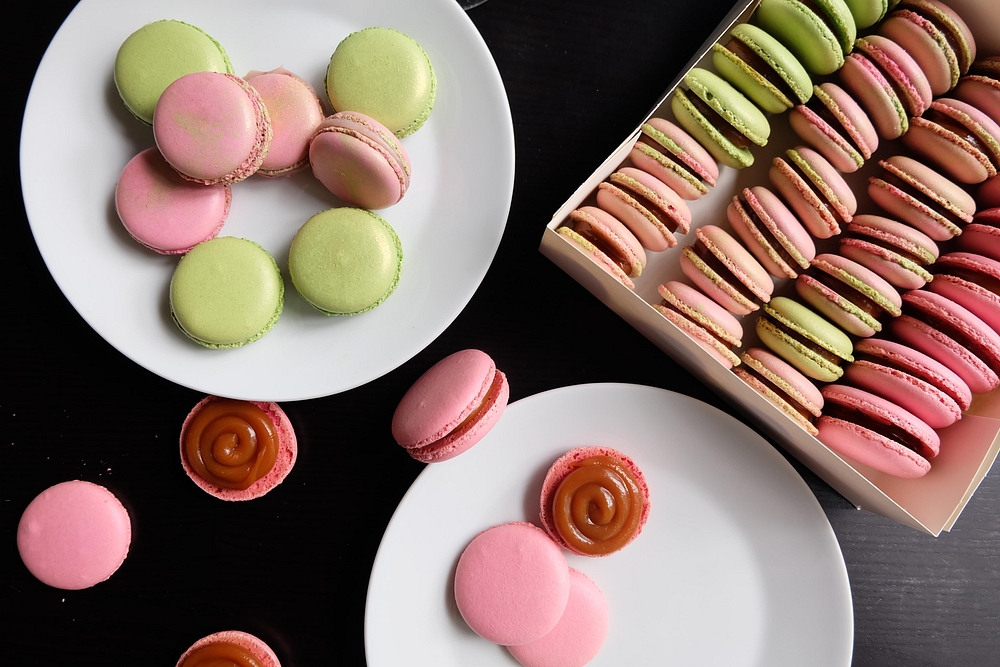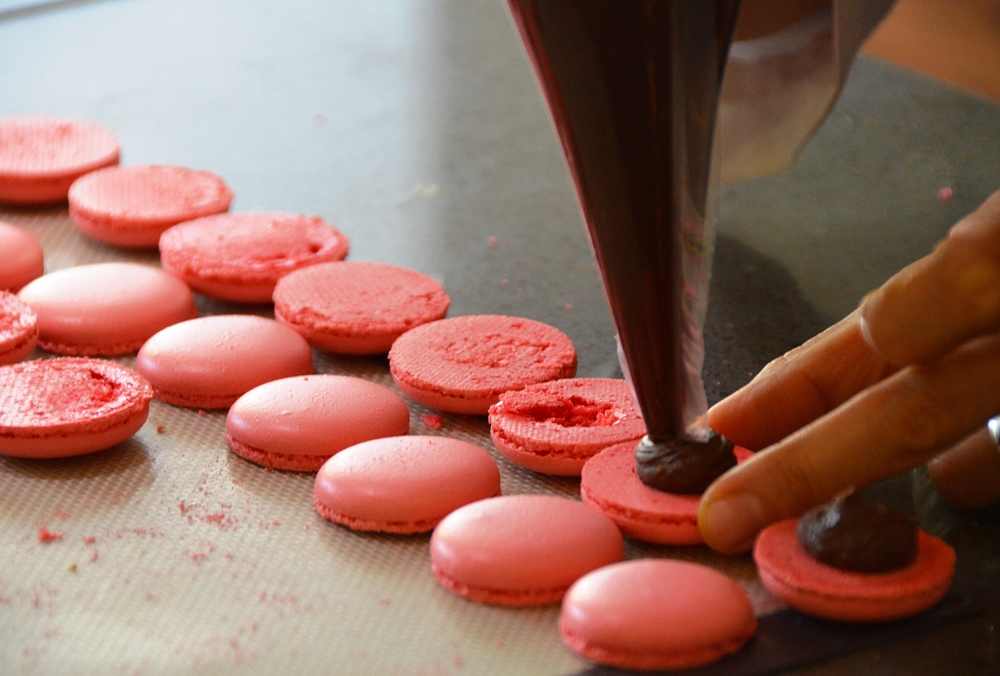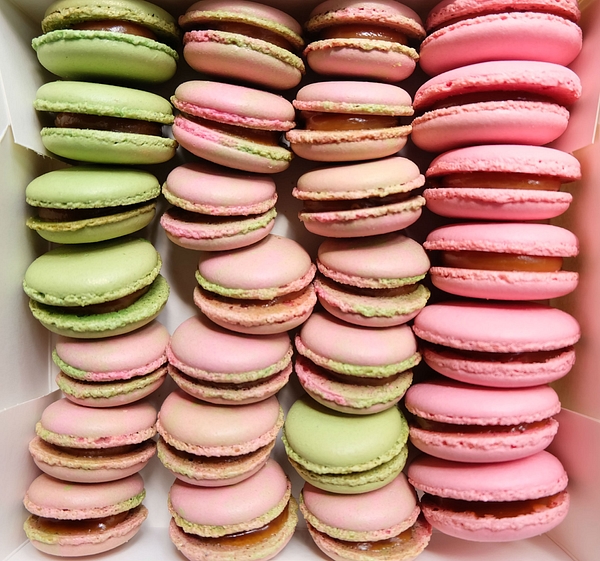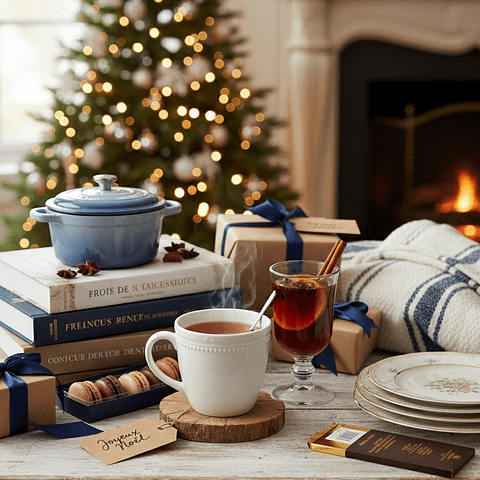Maybe it's that lovely contrast of crunchy and chewy, maybe it's the rainbow of colours available, or the flavours waiting inside (or maybe it's all three!) but the little macaron is taking the patisserie world by storm. So where did this cute little cookie come from and how is it made? Well, you've come to the right place to find out.

First thing's first, let's clear something up. A macaron is not a macaroon. A macaroon is a different treat entirely involving coconut and chocolate and almonds and other - yes, very lovely - things. Marvellous I'm sure, but decidedly not a macaron. If you mean macaron, do not say macaroon. This leaves you with two choices - you can say the anglicised version and pronounce it Mak-a-ronn, or you can throw caution to the wind, rev-up your best French accent and proudly declare that you are in search of a Maca-hhon. The double hh there can best be described as a gentle clearing of the throat. Be bold! Be brave!
One more thing before we move on. If you get muddled and end up saying something more like Macron, you may find yourself having a confusing conversation about the current French president. Forewarned is fore-armed.
A Macaron may not be the first thing that springs to mind when you think of meringue, but that's precisely what macarons are - meringue-based little cookies held together by a whole medley of fillings full of flavour. In fact, it's the fillings that actually give macarons their flavour - the cookies themselves don't really taste of much, but what they do provide is that amazing chewy texture that makes them so moreish.

As meringue connoisseurs will know, there are three types of meringue (French, Italian and Swiss) but you'll be relieved to know that macarons can only be made from two of those types: French and Italian. The difference between these methods is simple. While French meringue is made without heat, with the powdered sugar mixed directly into the egg whites, Italian meringue uses boiled sugar, poured into the mix as a syrup. There is a reason the Italian method is the most popular with macaron makers - thanks to that sugar syrup, the resulting meringue is much more stable, giving the most consistent results.
In fact, this is the key difference between our 2-hour and 3-hour Macaron Classes here at La Cuisine - the 3-hour experience teaches you how to use both French and Italian methods, while the 2-hour Class focuses exclusively on the Italian method favoured by macaron-makers the world over. Voilà!
Another genius thing about macarons? They are 100% friendly for those with gluten intolerance or coeliac disease, meaning you can live your best gluten free life in Paris! (For more tips on that score, check out our Handy Map of gluten free hotspots in Paris).
For a pastry that's still so on-trend, the macaron has been around for a long time. Given our earlier conversation about the use of Italian meringue, it doesn't take Sherlock Holmes to solve the mystery of the macaron's origins - Italy, of course, and more specifically, Venice, and more specifically, Venetian monasteries in the 700s. You can always rely on monks and nuns to come up with the good stuff: cheese, Champagne, wine, cakes - you name it, those good ol' holy folks have been making it for centuries. In this case, it's over 1,300 years of macaron making!

So macarons, or maccherone if you want to enjoy a little Italian, were born. Once the Venetian monks had mixed almonds, egg whites and sugar to create the basic macaron-cookie-concept, this little 8th-century treat became an understandable hit. In fact, Catherine de Medici was such a fan she probably brought the Italian delicacy with her to France in the 16th century, when she married Henry II. One thing we should note is that these little cookies weren't sandwiched together with a filling yet - that would come later, and would be a definitively French innovation...
For that innovation we have Parisian patissières to thank - the only question is, which one? Some attribute the creation to a name we all know and love - Ladurée! Was it - as some declare - Pierre Desfontaines of this famous pastry house who first thought, Why have one macaron, when you can have two? Or was it another patissière, Claude Gerbet? He certainly thought so, and for a while well-to-do Parisians referred to these treats as Gerbet. Perhaps this mystery really is one for Sherlock. Whoever had the bright idea, the Macaron Parisien was born, and the rest is history. Actually it's all history, but nevermind that.
Since that lightbulb moment, the macaron has entered a golden age of creativity. Pierre Hermé is the famous fourth-generation pastry chef responsible for a lot of the macaron magic that's going on in Paris, not least because of his amazing flavours - see suggestions below. Pierre Hermé is such a champion of the colourful cookie he even invented an International Macaron Day, the Jour du Macaron, which is celebrated every year on March 20th and benefits a different charity.
These days, and despite its Italian ancestry, the macaron is perhaps considered synonymous with Paris. Sofia Coppola claimed that her depiction of Marie Antoinette (Kirsten Dunst) surrounded by pastel-hued macarons in the eponymous 2006 movie had "made macarons hot again" and jokingly lamented that she had not thought to buy shares in Ladurée before the film premiered. Perhaps it was Pierre Hermé that changed the game, or maybe we all just woke up to the fact that macaorns are MARVELLOUS.
Flavours to try next time you're in Paris...
Pierre Hermé
Mogador (chocolate and passion fruit)
Mosaïc (pistachio, cinnamon, and kirsch-soaked cherry)
Ispahan (rose, litchi, and raspberry)
Ladurée
Strawberry Mint
Salted Caramel
Raspberry

